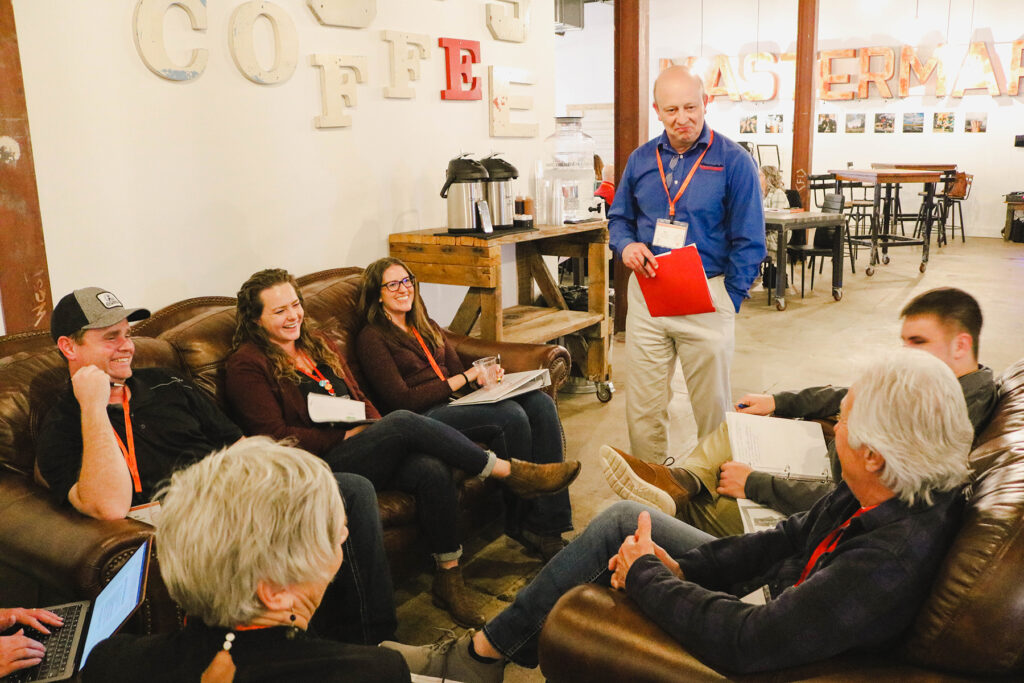 Nebraskans are known to be an independent lot, probably owing to our pioneer heritage. As with most attributes, that serves us well . . . until it doesn’t, and sometimes we find that we don’t get as much done working separately as we would’ve together. Today I’d like to share several recent examples of burgeoning collaborations within the Nebraska Community Foundation network that I think are worthy examples of Nebraskans setting aside that independent streak to good effect.
Nebraskans are known to be an independent lot, probably owing to our pioneer heritage. As with most attributes, that serves us well . . . until it doesn’t, and sometimes we find that we don’t get as much done working separately as we would’ve together. Today I’d like to share several recent examples of burgeoning collaborations within the Nebraska Community Foundation network that I think are worthy examples of Nebraskans setting aside that independent streak to good effect.
NCF’s Energizing Entrepreneurial Ecosystems (E3) project is connecting entrepreneurs and entrepreneurial communities to build local and statewide economic development frameworks that “grow our own” business leaders. E3 is a collaboration in and of itself. NCF partnered with Valley County Economic Development, e2 Entrepreneurial Ecosystems and NetWork Kansas to build the project. Further, it’s a partnership with six local “E teams” who agreed to become our original cohort and then invite others to join them.
But the reason I mention E3 in this column is the number of outside organizations and people who’ve reached out recently looking to partner. I would submit it’s an excellent example of Nebraskans looking for ways to leverage partnerships into impact. Just in the last month or so, we’ve had productive conversations with Nebraska Business Development Center (NBDC) about a variety of ways NBDC and E3 might partner. Scott Asmus with SourceLink came to an E3 session to connect that resource. An entrepreneurial cohort led by University Extension Educator Shawn Kaskie met with Valley County’s E Team to discuss a partnership on business coaching. UNO’s Center for Public Affairs Research connected with E3 to discuss how a research project they are planning could learn from, and inform, the E3 cohort.
I’m sure most are aware of the universal challenge of attracting more people to rural Nebraska these days. This is another venue in which we’re seeing growing collaboration. Today, in fact, is the first People Attraction work session hosted by NCF. Participants will represent communities, University of Nebraska, local economic development, education (both K–12 and early childhood) and employers. This group is giving their time to learn from each other, teach each other and ultimately work together to bring more people to Greater Nebraska. Having been around this work for 15 years, I can tell you that no Nebraska town can do this alone so it’s awesome to see us banding together to share ideas and resources.
Related to that topic, I’ve been part of recent conversations convened by the Nebraska Chamber with employers, social service agencies and economic development folks to discuss refugee resettlement to Nebraska. It’s been a real education on how many collaborative partners it takes to bring refugees to a state and it’s rewarding to see the agencies and individuals around the table who want to work together.
Closely related to people attraction is housing and it’s another space that is inviting collaboration. In fact, it has become clear that collaboration is imperative in housing work. Given the market challenges in bringing housing to rural places, it really takes “all hands on deck” to make progress. NCF has convened an experiment between public funding, charitable funding, private enterprise, local leaders and housing organizations to all come together to create housing progress. We’re also participating in a Nebraska Investment Finance Authority task force bringing a diverse group to the table to innovate together on statewide approaches to housing.
Now, I know in Columbus there is a long history of collaboration. But first of all, that history must be continuously reinforced and number two, that doesn’t exist everywhere. As such, I thought it was time well-spent to lift up these examples as a reminder that independence is an admirable trait, but community-building takes collaboration too.



